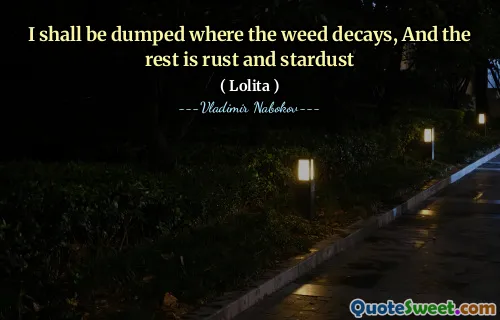You have to be an artist and a madman, a creature of infinite melancholy, with a bubble of hot poison in your loins and a super-voluptuous flame permanently aglow in your subtle spine {oh, how you have to cringe and hide!}, in order to discern at once, by ineffable signs―the slightly feline outline of a cheekbone, the slenderness of a downy limbs, and other indices which despair and shame and tears of tenderness forbid me to tabulate―the little deadly demon among the wholesome children; she stands unrecognized by them and unconscious herself of her fantastic power.
In the passage, the speaker describes the intense and often tumultuous emotions that fuel artistic perception. The blend of creativity and madness is essential for understanding the subtle beauty and darkness in others, particularly in someone who appears innocent but possesses a dangerous allure. This duality creates a sense of both admiration and dread, highlighting the complexity of such a character who exists unnoticed by the world around her.
The mention of "infinite melancholy" suggests a deep emotional turmoil that enhances the ability to see beyond the surface. The speaker feels both drawn to and repulsed by this power, as it evokes feelings of despair and tenderness—a powerful juxtaposition that reinforces the themes of recognition and the hidden nature of desire. The imagery of beauty intertwined with danger invites readers to reflect on the nature of obsession and the fine line between fascination and monstrosity.






